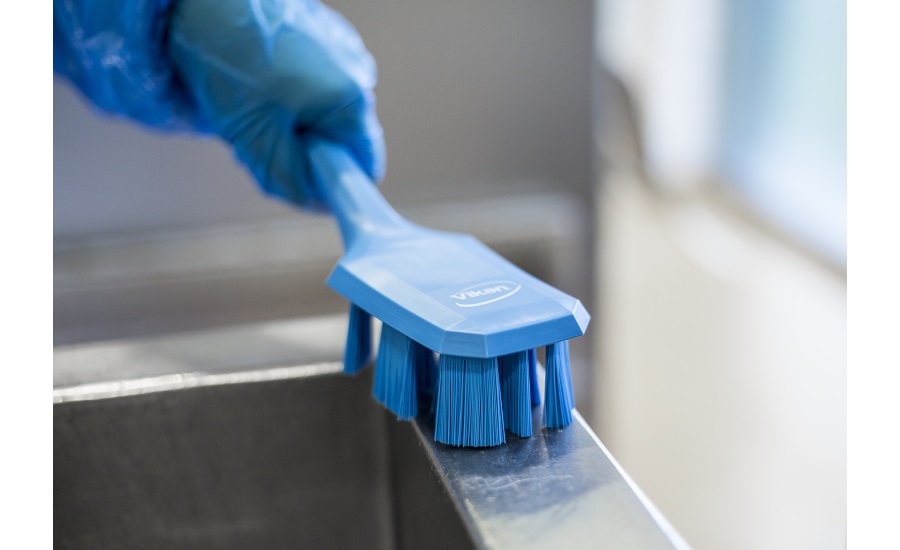Sanitation and cleaning best practices
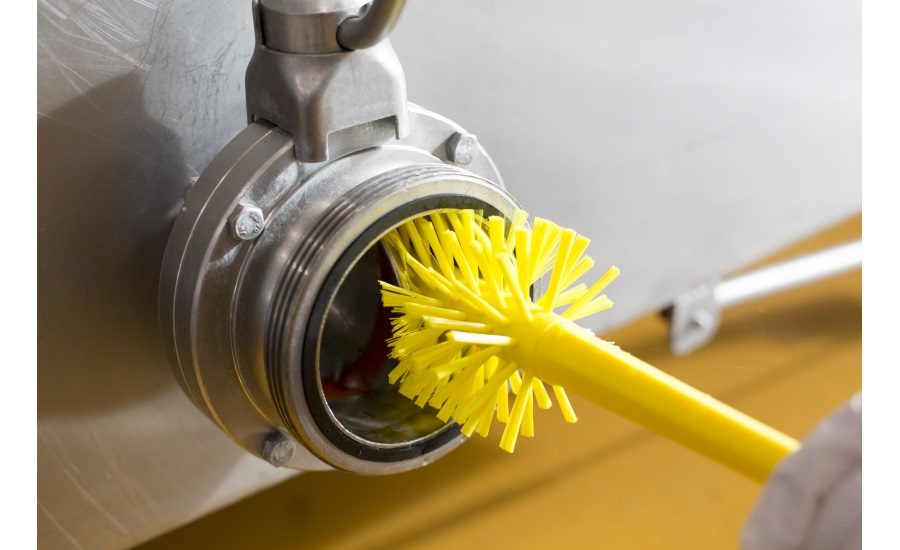





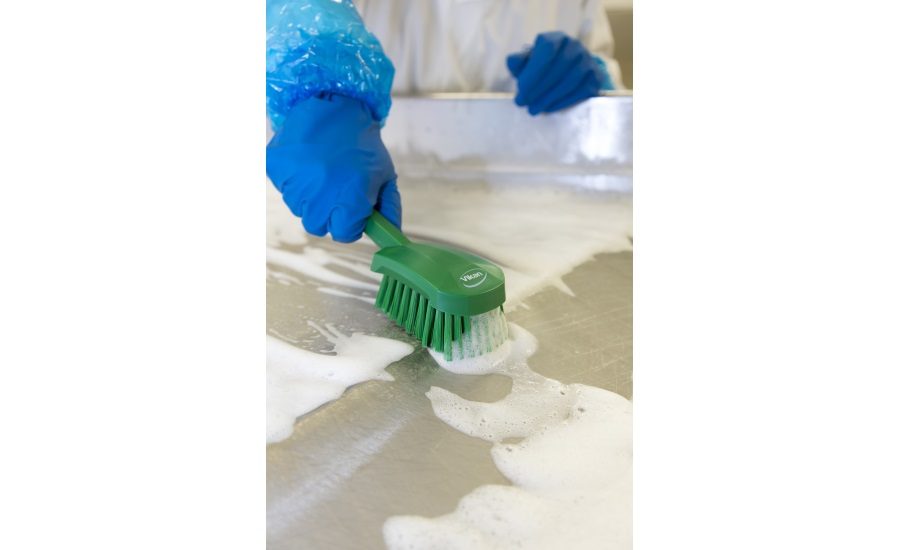

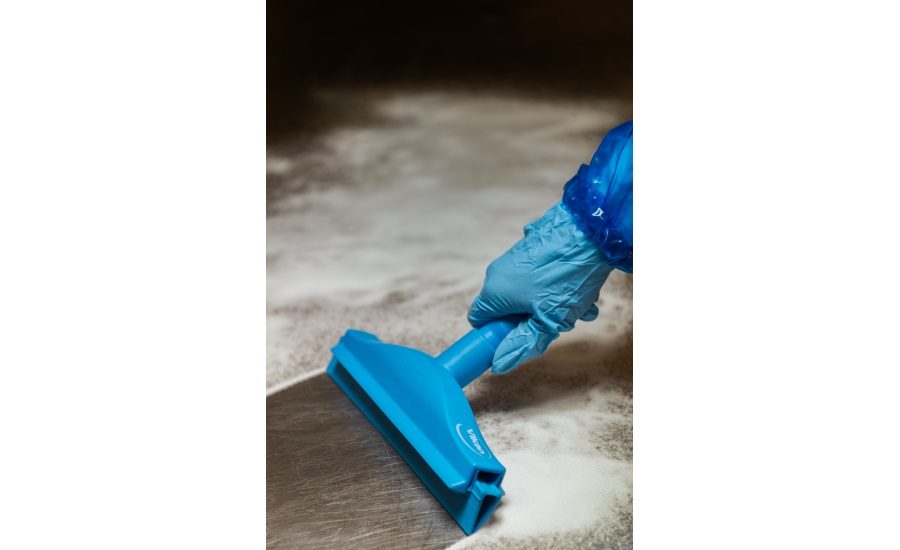


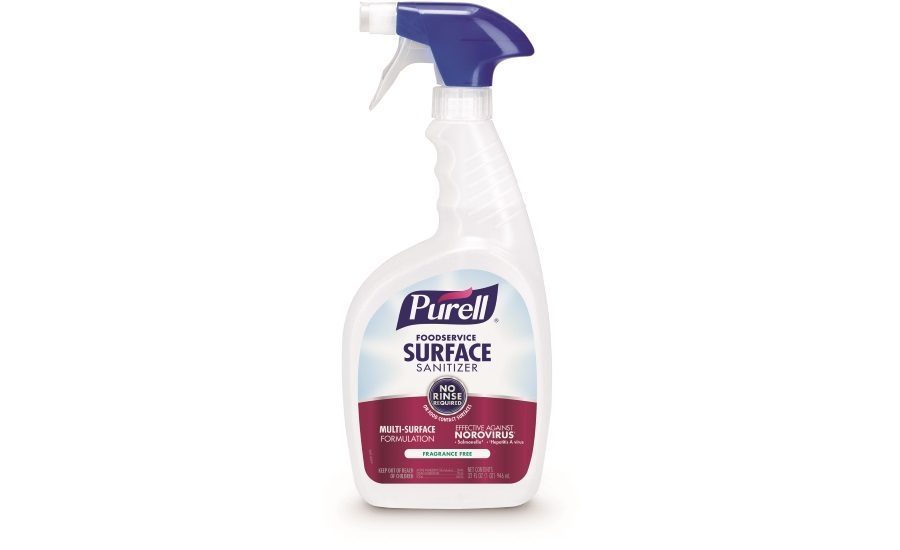












Sanitation and cleaning are essential in any food facility. Businesses should develop best practices and adhere to them, in order to ensure that nothing falls through the cracks, both literally and figuratively.
Best practices
Amit Kheradia, education and technical support manager, Remco, Zionsville, IN, says that developing a cleaning and sanitation (C & S) best practices program for a food facility generally entails integration of the technical sciences and managerial arts in order to meet or even exceed regulatory and industry standards. This exercise should involve asking the following basic questions:
- What type of surface is being cleaned?
- What is the nature of the soil being removed?
- What is the aim of the cleaning action?
- What kind of procedural cleaning activity is being implemented?
- Is the cleaning process well validated?
- Is the cleaning process adequately verified?
- How effective is the cleaning process?
- How efficient is the cleaning activity?
- Are the processes being supported by valid, scientific, technical and credible references?
- Are remedies in place to correct and prevent anything significant that could go wrong?
Kheradia says that some commonly accepted C& S Best Practices are as follows:
- When possible, avoid wet cleaning. Whereas the use of water is normally unavoidable in certain high-risk facilities such as meat-processing plants, sites dealing with low water-activity foods (e.g. baked goods, snacks, and certain confections) should avoid or minimize water usage during cleaning. In these dry ingredient production zones, any moisture or condensation remaining on equipment or surfaces can act as a medium for microbial growth, and thus create a huge food safety concern. This is why dry-cleaning methods like using scrapers, sweeping, and vacuuming, are generally employed in these environments.
- Use the right types of sanitation tools for the task. Using the wrong tool might damage the equipment, and cleaning won’t be as effective. Generally, soft-bristled brushes are used for sweeping dry, fine powdery soils from a surface. For larger and moist debris, medium-bristled brushes are effective. Stiffer bristled brushes can be used to scrub stuck-on dirt from a surface with water and cleaning agents.
- Allocate a cleaning schedule for every surface or area in the facility. Along with a Master Cleaning Schedule, it is essential to have a set of cleaning implements to cover each significant area within a food plant. For example, a condensation squeegee with long extension handle can remove water droplets from high-reaching ceiling panels; ergonomic, angled brooms can remove dirt from undersides of equipment; pipe brushes or narrow utility brushes can perform detailed cleaning of pipes or nooks and crannies within equipment; and a good scrubbing brush can clean a wide surface such as a tabletop counter.
Earlier in the year, Best Sanitizers published an article entitled Fighting Listeria in a Food Processing Facility, which included cleaning and sanitizing best practices for Listeria and other pathogens of concern for food processing customers.
Included from the article are the following excerpts:
- Cleaning and Sanitizing Programs: Processors must create an inhospitable environment for Listeria through rigorous and regularly scheduled programs. Sanitation must encompass three distinct elements: 1) The effective removal of soil from product contact surfaces, non-product surfaces, and other identified reservoirs of concern; 2) An effective rinse step; and 3) Proper application of an EPA-approved sanitizing agent in accordance with proper contact time, concentration and temperature directions (4) Processors must utilize sanitizers in concert with manufacturer’s instructions and be cognizant of the fact that effective sanitization cannot be achieved without thorough cleaning and rinsing.
- Equipment Design and Inspection: Hard-to-clean areas on and inside food processing equipment can foster the accumulation of water and food debris resulting in Listeria colonization and growth (5). Well-designed hygienic equipment, such as clean-in-place (CIP) technology, can significantly minimize contamination risks. Even with this cutting-edge machinery, food processors should regularly strip down equipment and deep clean areas that are difficult to reach (e.g., slicers and hollow sealed rollers) during daily cleaning. Quality assurance professionals should conduct a risk assessment to determine the frequency of deep cleaning.
- Industry Best Practices: Controlling cross-contamination is an integral part of Listeria control initiatives. Through GMPs and employee training, it is important to impress on employees that adhering to defined personnel practices (e.g., good personal hygiene) and production practices (e.g., designated traffic patterns) can significantly reduce cross-contamination in facilities. Researchers have reported that recontamination from the processing environment is the principal source of Listeria contamination in RTE foods (6).
- Environmental Monitoring Programs: Under the FDA’s Food Safety Modernization Act (FSMA), food production and processing facilities are required to have environmental monitoring programs in place as part of their preventive controls. Frequent and strategic sampling of the processing environment is necessary to establish that cleaning and sanitation procedures, as well as other Listeria control initiatives, are performing as intended.
Paul Barnhill, CTO, Meritech, Golden, CO, says that food manufacturing staff present the largest potential source of contamination within a food plant.
“This is due to the fact that as staff proceed throughout facilities in order to complete their duties each day, they come in contact with surfaces, equipment, product, clothing, and their own bodies—sometimes moving from clean to dirty zones without a hygiene intervention step,” he says.
Working with a diverse, multi-lingual staff can make regular hygiene training and compliance with sanitation standard operating procedures (SSOPs) more difficult to manage, resulting in increased cross-contamination risk from poor employee hygiene, says Barnhill.
“Even facility design, layout, and operational flow are significant factors that should be taken into account when creating an effective employee hygiene program.”
Best practices include creating a culture of hygiene excellence, educating on the risk and benefits of proper hygiene, and continued enforcement of best practices.
Chip Manuel, food safety science advisor, GOJO Industries, Akron, OH says that the best practices for sanitation and cleaning are proper training, emphasis on proper technique, and frequent and consistent cleaning and sanitation techniques.
“Before considering whether you want to use quaternary ammonium compounds, chlorine, or a surface sanitizer formulated with an alternative active ingredient to provide quicker kill times, you have to make sure food workers are trained properly on sanitation and cleaning practices. Studies have shown that restaurants that properly train staff on food safety practices have reduced risk for causing a foodborne outbreak,” he explains.
In addition, food workers must improve cleaning and sanitation techniques. That starts with always reading the manufacturer’s instructions for how to properly use cleaning and sanitation chemicals, says Manuel.
“Make sure the concentration of the product and the contact times are correct for the application. Always remember to NEVER mix chemicals, unless explicitly directed to do so by the manufacturer’s instructions. Mixing two or more chemicals that are not designed to work together is a dangerous practice and should always be discouraged.”
Knowing where to focus efforts within a food establishment is critical, he notes.
“Recently, a NOROVIRUS HOT SPOT program was introduced by PURELL and Public Health Innovations to improve cleaning and sanitation methods to reduce the risk of a norovirus outbreak in food establishments. Using information collected from an FDA risk assessment of norovirus in food establishments and other scientific studies, the program focuses on high-touch, high-risk surfaces where norovirus transmission can occur,” Manuel says.
The program includes tools, SOPs, and processes for preventing norovirus transmission, he explains.
“Using a program like this not only keeps norovirus from impacting a food establishment, but also improves public health and is a great way to start improving cleaning and sanitation techniques.”
Finally, always employ frequent and consistent cleaning and sanitization, Manuel recommends.
“Along with lack of training, lack of motivation or time can keep workers from doing their cleaning assignments properly. Make sure schedules are followed, the cleaning is consistent shift by shift, and shortcuts aren’t taken because there was a rush or the establishment was short staffed. Consistent cleaning also means having a record of those cleanings. Adhere to the rules and regulations set forth by the establishment and the FDA.”
Food establishments that employ best practices for cleaning and sanitation have a reduced risk of foodborne illness, he says.
“These are important practices to get right, and there are hundreds of ways to do it wrong. Work with your team to find the process that works best for your location. Workers will appreciate the extra effort to find a solution, and guests will too.”
Sanitation and cleaning mishaps
“Cleaning and sanitation tasks, if not done correctly, can eventually turn out to be a messy, risky, or a non-value-added endeavor,” says Kheradia. Remco recommends the following solutions to reduce product contamination incidents within a food facility:
- Use color-coded tools to help prevent cross-contamination between food-contact and non-food contact surfaces. As an example, it is easy to distinguish a yellow tube-brush for cleaning the pipes carrying fluid product from the black tube brush used for cleaning drains, which helps employees remember to use each tool for its designated purpose. Remco recommends total-color tools and allocating separate color-coded stations for storing all cleaning tools.
- Cleaning tools can be significant vectors of contamination in food plants. For instance, an independent UK study has revealed that “47 percent of the cleaning equipment sampled was found positive for the Listeria monocytogenes pathogen.” Hygienically designed cleaning tools, therefore, are easily cleanable and less of a carrier of contaminants of a food safety concern than conventional tools. Vikan’s Ultra-Safe Technology (UST) brushes and Ultra-Hygiene squeegees are great choices to invest in for high-risk processing facilities.
- Remco encourages food facilities to invest in high quality, operationally safe and FDA-compliant tools that can withstand the chemical, temperature, and mechanical stresses encountered in the food production environment. Furthermore, from an occupational health and safety perspective, ergonomically designed tools are a much better alternative when it comes to preventing or minimizing workplace injury incidences in a food plant.
Hand hygiene
April Zeman Lowe, national account manager, Best Sanitizers, Inc., Penn Valley, CA, says that in addition to written procedures for equipment, hand hygiene procedures should be reviewed for effectiveness.
“Hand hygiene, glove, and footwear sanitation provide a crucial role in overall plant sanitation to minimize cross-contamination from employees in the plant. Controlling before employees enter the plant reduces the overall bacterial population which can take up residence on equipment and spread to other areas of the facility. Hand, glove, and footwear recommendations are also set forth in Section IV, A. of the Control of Listeria monocytogenes in Ready-To-Eat Foods: Draft Guidance,” she says.
Training and signage can include:
- Hang handwashing and hand sanitizing How-To posters at washing stations as constant reminders for employees. Include posters in English and all appropriate languages.
- Implement yearly, monthly, or quarterly hand hygiene trainings to educate current and new employees and reinforce proper handwashing methods.
- Request assistance from your hand hygiene product (or chemical) manufacturers. Best Sanitizers, Inc. offers a comprehensive and complimentary hand hygiene training program for food manufacturers. For more information please visit http://www.bestsanitizers.com/?/hh-training-hp.
- Make bilingual options available of all training materials.
- Periodically swab test hands and document results to verify the effectiveness of current programs.
- Follow up on the training with employees to make sure they understand why hand hygiene is important and help them to gain insight and see the areas they may be deficient in with handwashing and sanitizing.
Some best practices for fostering a food safety culture around hand hygiene include:
- Lead by example. When management-level employees properly wash and sanitize their hands it shows there is a true commitment to hygiene instead of just going through the motions.
- Recruit a hand hygiene champion(s) for each shift. Sometimes it is better if a peer mentions the need for better hand hygiene than management.
- Applaud employees for a job well done: supervisors and managers should praise employees when they see an employee practicing proper hand hygiene. They should also correct employees when they see improper practices.
- Implement a Hand Hygiene Star Employee of the Month program to encourage workers to wash and sanitize their hands.
- If not already in place, incorporate hand sanitization as part of your hand hygiene program.
When selecting the proper hand hygiene products for a food processing facility:
- Choose an NSF registered E1 or E2 rated hand soap, and a E3 rated hand sanitizer for use in food processing.
- Choose products employees will want to use. Look for hand soaps and hand sanitizers formulated with emollients to keep hands soft and healthy, even with repeated use.
- Facilities seeking the greatest log reduction of harmful pathogens on hands will follow handwashing with an appropriate E3 rated hand sanitizer which can provide log reduction up to 99.9999 percent.
- Best Sanitizers recommends following handwashing with an E3 rated hand sanitizer. For optimum results, choose a hand sanitizer spray. Atomized sprays provide excellent coverage and saturate the hard-to-reach areas of the hands and fingers, where pathogens commonly hide.
Barnhill says that there are a few areas of risk, and best practices, for hands and gloves.
Areas of Risk:
- If the staff member does not wash their hands properly when entering the plant or when coming to work after the restroom or a break. If hand washing is conducted manually, this introduces substantial variability and risk from one hand hygiene event to the next. Difficult to document compliance unless the process is policed.
- If the hands are not washed properly before donning gloves. When there is glove failure there is risk of a cross-contamination event, especially a ready to eat product.
- Washing hands when changing tasks or pieces of equipment and especially when moving from a raw to ready to eat, cooked, or an allergen area.
Recommended best practices:
- Effective, consistent, validated hand hygiene processes
- Using gloves correctly post hygiene event
- Sanitizing gloves post donning
- Hand hygiene intervention steps between zones
- Effective training and ongoing enforcement of best hygiene practices.
- Where gloves when dealing with heavy soils so when the glove is removed the soiling is disposed of in a waste container and not a sink where it can be a harbor of pathogens.
Employee hygiene and food safety go hand in hand, says Lowe.
“Proper signage and training raise awareness, and when combined with an E1 or E2 rated hand soap and E3 rated hand sanitizer, can help to serve as the foundation of a strong food safety program. Investing in employee hygiene programs and training should always be considered an investment instead of an expense.”
Preventing outbreaks
“As incredible as that it might sound, [one single person can really be the cause of an outbreak],” says Barnhill.
“Any one person can be a carrier of deadly pathogens, and pathogens only have one purpose—to survive and thrive. One example that illustrates this risk that we can all recall is the 1993 E.coli outbreak at Jack in the Box. The outbreak was traced back to staff members not properly cooking the hamburger to the proper temperature to kill the E.coli.”
This risk is greatest when serving ready to eat products, he says.
“Ready to eat products are the most susceptible to foodborne illness outbreaks due to the increased complexity of the manufacturing process introducing a greater number of potential contamination vectors and because they do not require any further heat treatment or cooking to enjoy. So, pathogens that may exist within the food product will be directly consumed.”
Contamination in RTE foods may come as a result of a multitude of scenarios, from touching by a person, improperly cleaned processing equipment, contaminated packaging, or even a contaminated water source that was not identified prior to being used, he says.
“This all boils down to human behavior. Is your staff constantly aware the risks of non-compliance with food safety procedures? Are they just going through the motions?”
Some steps that food processing managers can take to reduce food contamination caused by lack of employee hygiene include taking ownership of employee hygiene, says Barnhill.
“When a plant manager, owner, third-party inspector, or contracted co-packer is touring or inspecting a facility, their first steps should including walking into an employee hygiene zone that has been properly engineered and designed to accommodate the staff entering the area and to systematically guide them through each step in the PPE donning and hygiene process before entering the facility,” he recommends.
“This process will not only ensure greater food safety and product quality, but will also serve as a visual representation of the leadership’s commitment to creating a culture of food safety for all.”
Best practices for achieving hygiene program excellence include:
- Properly equip staff with easy, effective, and consistent hygiene processes and equipment. At Meritech, we recommend implementing fully-automated hand washing and footwear sanitizing systems in order to provide a standardized, clinically-validated, and easily documented process, says Barnhill.
- Ensure that employees are properly trained on the importance of hygiene and the requirements of your SSOPs. Measure compliance regularly, and show your staff that you are monitoring compliance by intervening when compliance is not meeting your acceptance criteria. Reinforce compliance via leading by example. Line workers, senior management, customers, facility guests—regardless of a person’s position, they should be required to follow the facility’s SSOPs.
- Make certain the facility is designed with operational flow and the movement of people in mind to effectively pinpoint where hygiene intervention steps should be included.
Looking for a reprint of this article?
From high-res PDFs to custom plaques, order your copy today!

















